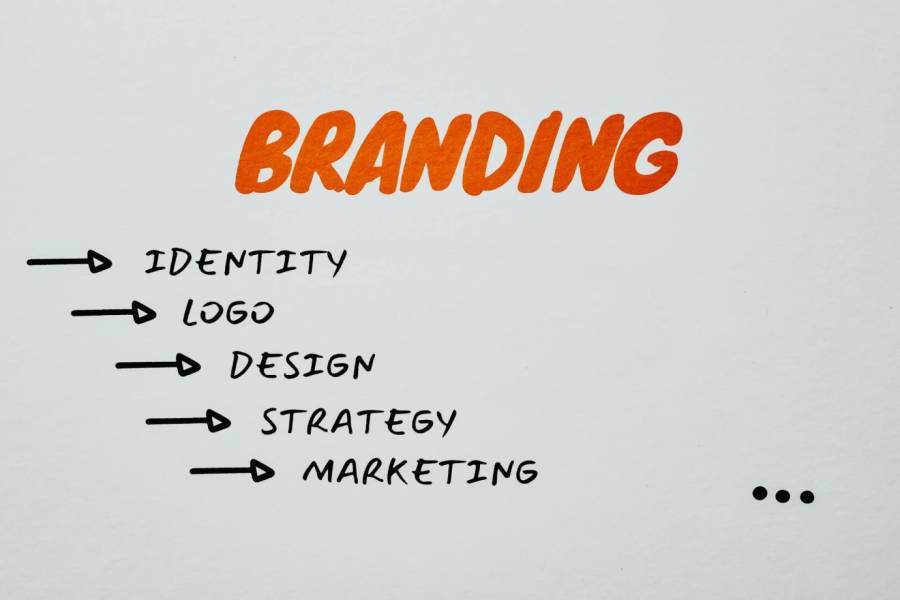Branding is more than just a logo or a catchy slogan—it’s the soul of your business. A strong brand communicates who you are, what you stand for, and what customers can expect from you. Even the most well-intentioned companies can fall into traps that damage their branding and, in turn, weaken their business identity. Whether it’s inconsistency, poor messaging, or neglecting customer perception, these missteps can dilute your brand and leave your target audience confused or disconnected. In this post, we’ll break down six of the most common branding mistakes that businesses make and how to avoid them so your company can build a clear, powerful, and lasting identity.

Inconsistent Brand Messaging Across Platforms
One of the biggest branding missteps companies make is failing to maintain consistency in messaging across all platforms. Your website, social media, packaging, and customer service interactions should all communicate the same core values and tone. When there’s a mismatch—for example, a professional tone on your website and a casual, playful tone on Instagram—it can confuse potential customers and erode trust. As top branding firms explain, inconsistency suggests disorganization and lack of focus, making it harder for your audience to connect with your brand. To avoid this, establish clear brand guidelines that define your voice, messaging style, and visual elements, and ensure all departments adhere to them.
Neglecting to Define a Clear Brand Identity
Many businesses launch without fully understanding who they are as a brand. They might have a logo and a product, but no clear vision, mission, or set of brand values. Without a well-defined identity, it becomes difficult to differentiate your company from competitors or build emotional connections with customers. A brand identity should be the compass for all marketing and communication efforts. It answers key questions: What do we stand for? Who are we speaking to? What makes us unique? Taking the time to create a solid foundation helps ensure every branding effort supports a unified identity that customers can recognize and relate to.
Copying Competitors Rather Than Standing Out
It’s natural to look to successful companies for inspiration, but blindly copying their branding strategies is a shortcut to brand invisibility. When businesses mimic competitors, they risk becoming indistinguishable in the market. This lack of originality can make your brand feel generic and unmemorable. The goal should be to find your unique value proposition and communicate it in a way that sets you apart. Authenticity resonates with consumers more than imitation. While understanding market trends and what works for others is valuable, your brand must carve out its own identity to capture lasting attention and loyalty.
Lacking a Long-Term Branding Strategy
Another common mistake is approaching branding as a one-time project rather than an ongoing strategy. Branding should evolve with your business and market trends, yet many companies create a logo and tagline and stop there. Without a long-term vision, brands can become outdated, irrelevant, or lose their emotional connection with customers. A successful brand requires ongoing nurturing, evaluation, and sometimes rebranding to stay aligned with business goals and customer needs. This includes keeping content fresh, updating visual elements when necessary, and staying active in storytelling that keeps your brand top-of-mind. Treat branding as a continuous investment rather than a completed task.
Underestimating the Power of Visual Identity
A poorly designed logo, clashing color schemes, or inconsistent typography can instantly turn potential customers away. Visual branding plays a critical role in forming first impressions and reinforcing brand recognition. Many companies treat it as an afterthought or settle for DIY designs that don’t reflect the quality of their products or services. Investing in professional design that aligns with your brand’s personality and audience is crucial. Cohesive visuals across your website, social media, packaging, and print materials help to build a recognizable and trustworthy image in the minds of consumers. Remember: your visual identity should support and elevate your overall brand strategy.
Ignoring Customer Perception and Feedback
Your brand isn’t just what you say it is—it’s what your customers perceive it to be. Ignoring this reality can lead to a major disconnect between your intended message and how it’s received. When companies fail to listen to feedback or monitor how their brand is being discussed, they miss out on crucial insights that could guide improvements. Regularly checking reviews, conducting surveys, and engaging with your audience on social media can help you stay aligned with customer expectations. Brands that evolve based on real-world perception while staying true to their core values are the ones that build stronger customer relationships and long-term loyalty.

Building a strong, resilient brand requires more than just aesthetics—it takes strategy, clarity, and consistent execution. Avoiding these common pitfalls can help your business maintain a strong identity and foster genuine connections with your audience. Take the time to evaluate your current branding efforts and see where improvements can be made. A thoughtful, authentic brand is one of your company’s most valuable assets—and it’s well worth getting right.

Peyman Khosravani is a global blockchain and digital transformation expert with a passion for marketing, futuristic ideas, analytics insights, startup businesses, and effective communications. He has extensive experience in blockchain and DeFi projects and is committed to using technology to bring justice and fairness to society and promote freedom. Peyman has worked with international organizations to improve digital transformation strategies and data-gathering strategies that help identify customer touchpoints and sources of data that tell the story of what is happening. With his expertise in blockchain, digital transformation, marketing, analytics insights, startup businesses, and effective communications, Peyman is dedicated to helping businesses succeed in the digital age. He believes that technology can be used as a tool for positive change in the world.








